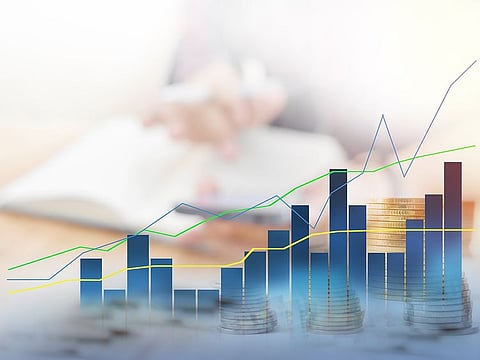Which trends should UAE investors be on lookout for?
Property and stocks still offer much, even for risk-averse investors

Just like Savanarola’s ‘Bonfire of the Vanities’, there was a bonfire the befell the US capital markets as it became increasingly apparent that expectations for interest rate cuts were wildly optimistic.
Along with this came the realization that valuations would have to adjust, somewhat painfully, in both the equity and fixed income markets as the demons of inflation continue to run amok in an economy that remains overstimulated and overvalued.
These valuation models, much derided for extended periods of time, are not much of a consolation to the faithful either. Rather, its truths feels more necessary than ever. Higher interest rates and cost of money will by its very nature seek to depress asset valuations over time.
Yet, as soon as markets rebound, the bulls come back, rather like Chaucer’s pilgrim who stated: ‘As soon as a coin in the coffer rings, the soul (and wealth) from Purgatory springs’.
The market, a gigantic encyclopedia of human motives has remained overvalued in the West largely from 2012 to 2020. Then, after a brief correction, has gone further into the levels of the stratosphere, with market cap nearing twice the GDP or GNP levels.
Room to grow for UAE capital markets
Even if one were to adjust for the balance-sheet of the Federal Reserve, the extent of overvaluation remains staggering, with a shift being seen into energy and defensive sector. This augurs well for UAE capital markets, not only tactically, but on a macro level where, by the same yardstick, market cap to GNP is at a more modest 20 per cent premium.
With accelerating profitability, especially on account of the energy and natural gas sector, as well as high dividends, the potential for continued capital rotation seems likely towards emerging markets. (Just as Japan’s resurgence was realized after three decades and green shoots start to appear in other emerging markets, there is a compelling case for valuations leading the way, as inflation eats into valuations in developed markets).
Domestic stalwarts like ADNOC group companies along with high dividend yielding Dubai stocks appear poised to be the prime beneficiaries.
Where does that leave us with real estate? In the US commercial markets, there seems to be value that can be extracted, with valuations having cratered by as much as half.
In the UAE, the mid-market sector (in areas like Majan and Arjan) in the ready space remains attractive, although the sheer number of offerings in the offplan space foretells of price correction that has already begun in the form of ‘discounts’ offered to clients. (The gap between ready and offplan prices has more than doubled. Even listing prices have skyrocketed to 30-40 per cent above transacted levels with new launches.)
A return for ‘value investing’?
With an increasing emphasis on the ready space, there seems to be a signal that liquidity is waiting on the sidelines. But the mood of the market has turned tonally towards a buyers’ market. In the history of any commodity, there has never been a time of a shortage that has not been followed by a glut.
Whilst few would argue there is a glut at present, oversupply dynamics (which curiously dominated the headlines for much of 2017-19, when in fact there was none) is the predominant downside risk to be looked at now.
In the final analysis, inflation will continue to erode the purchasing power ability. The higher interest rates that come along with it will by definition continue to curb asset values. Value investing, long since declared dead, might well make its renaissance as equity risk premia and replacement values come back to the vernacular of mainstream financial commentary.
Investing is a process slow and arduous, and riddled with self-sabotage. Much of this leads to the ephemeral runs (and ruins) of excess, followed by the inevitable purge. Western capital markets, long in denial of the structural shift of the cost of money are now on the cusp of bracing for one.
Sign up for the Daily Briefing
Get the latest news and updates straight to your inbox




